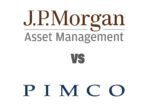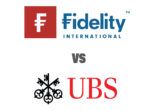Just how long funds in the top quartile of performance stay at the top is a useful question to ask. It challenges the idea that actively-managed funds can consistently outperform passive products.
For US funds, S&P has addressed the question through its “Persistence Scorecard”. The results have been bleak – over a three-year period, fewer than 20% of domestic US equity funds remained in the top quartile and over a five-year period, not one.
What about funds for sale in Asia? FE Advisory Asia has done some original research. Luke Ng, senior vice president of research at FE, examined the two most popular asset classes (by AUM) in Asia: global equity funds and Asia ex-Japan equity funds.
He looked at rolling three-year periods from 31 Dec 2002 – 31 Dec 2014 and found that on average, one-third of top quartile funds remained there one year later.
Persistent top quartile funds*
| Asset class | % staying top quartile 1 yr later |
| Global equity funds | 33.5% |
| Asia-Pacific ex-Japan equity funds | 34.4% |
Source: FE.
*Funds registered for sale in Hong Kong. The percent is the average over rolling three calendar year periods from 31 Dec 2002 – 31 Dec 2014 (the last ten intervals).
Therefore, basing fund selection on quartile rankings alone, a fund selector would have only a slightly better chance of picking a top quartile fund than by random selection, which brings a 25% chance. (Another justification for the familiar disclaimer, “Past performance is not a guide to future returns.”)
Funds drop from the top quartile for various reasons, Ng said. Funds may be structured with a bias toward a particular style that will falter as market conditions change. Or, during strong fund performance, the manager may become too aggressive with a risk-on strategy and when markets shift, he cannot react fast enough.
And when first quartile funds fall, they tend to fall further than their sector peers in the other three quartiles because they have taken on more risk.
Turning to bottom quartile funds, when averaging the same three-year periods, the majority tend to rise. Chances are they’ve been sitting on the bottom during a bull market because they are more defensively-positioned than peer funds. As the market goes south, investors move into defensive, risk-off products, and they rise.
Another way to look at this is that roughly 70% rise off the bottom quartile one year after a three-calendar year period of sitting on the bottom.
Persistent bottom quartile funds*
| Asset class | % staying bottom quartile 1 yr later |
| Global equity funds | 28.1% |
| Asia-Pacific ex-Japan equity funds | 30.9% |
Source: FE.
*Funds registered for sale in Hong Kong. The percent is the average over rolling three calendar year periods from 31 Dec 2002 – 31 Dec 2014 (the last ten intervals).
The best and worst
Certain three-calendar year periods had special characteristics. FE singled out when the most funds stayed in the top quartile and when the fewest remained.
Highest retention year*
| Asset class | Year |
| Global equity funds | 2006 (64.3%) |
| Asia-Pacific ex-Japan equity funds | 2011 (50%)* |
Source: FE. Funds registered for sale in Hong Kong.
*In 2012, the retention rate was also 50%.
Ng noted that in 2011, top quartile Asia-Pacific ex-Japan equity funds were most resilient, with half remaining at the top (also in 2012 the retention rate was 50%).
“These funds generally had a stronger bias towards smaller companies and/or ASEAN, where the respective markets continued to have a strong run following the rebound after the financial tsunami of 2008,” Ng said.
Trading places
The toughest year for equity funds in the ten-year study was, unsurprisingly, 2008, when the global financial crisis hit. The smallest number of top quartile funds stayed top quartile.
However, Ng added that in that same year, 68.7% of global equity funds and 78.6% or Asia-Pacific ex-Japan equity funds of bottom quartile funds rose to the first or second quartile. These rising funds had mainly a value, income and/or dividend focus, he said.
Lowest retention year
| Asset class | Year |
| Global equity funds | 2008 (18.8%) |
| Asia-Pacific ex-Japan equity funds | 2008 (7.14%) |
Source: FE. Funds registered for sale in Hong Kong.
The takeaway
Because the FE study used rolling three-year periods and took the average, the results are arguably a better indicator of persistence than the S&P study on US funds, which used only one three-year period.
Ng said the takeaway from the research is that performance data alone can mislead because complex factors are behind the numbers.
“By purely looking at historical returns, it could be hard to identify the source of the outperformance of a top quartile fund, and vice versa,” Ng said. “It could be generated by taking excess risk over a bull market, or by using a style that is favourable in particular market conditions, or through asset allocation or equity selection skills, or even simply by luck.”
More quantitative risk-adjusted indicators need to be applied, as well as qualitative research, to better understand why a fund under- or over-performs.
“It comes down to identifying a good manager,” Ng said. “We want to understand why a fund manager outperformed his peers, which is difficult to identify with quantitative data alone.”















